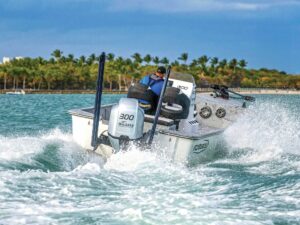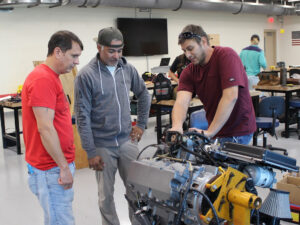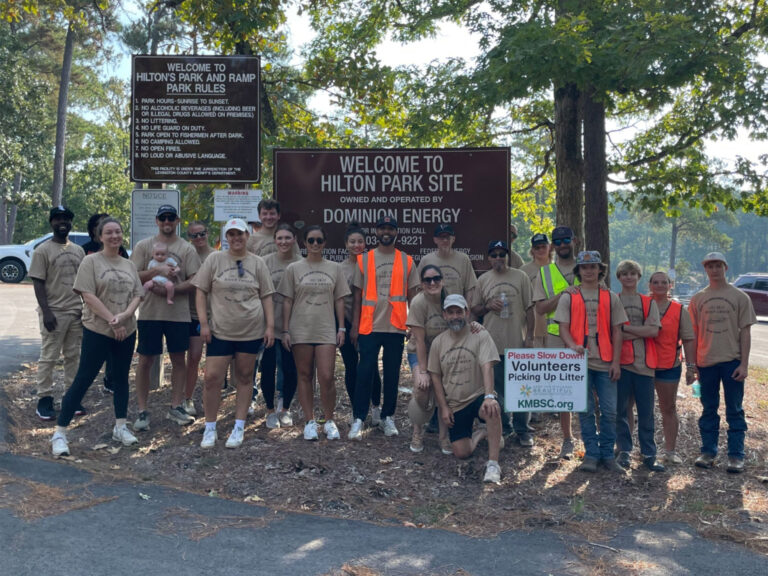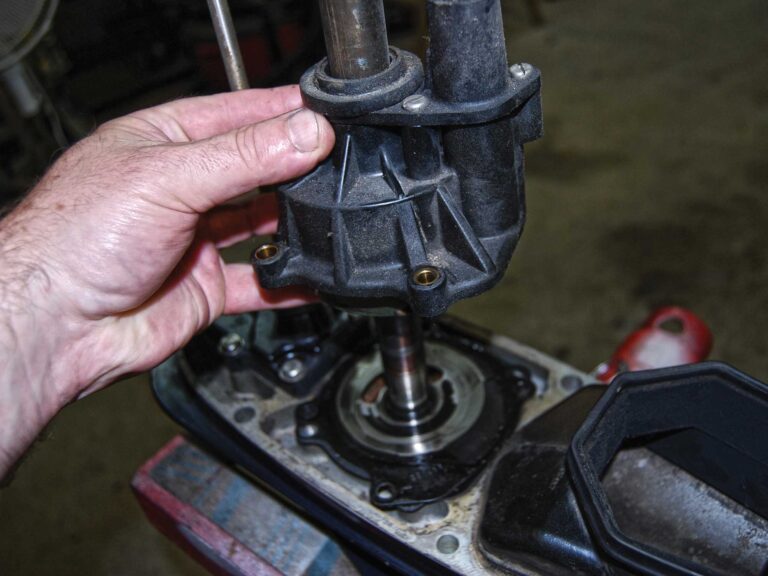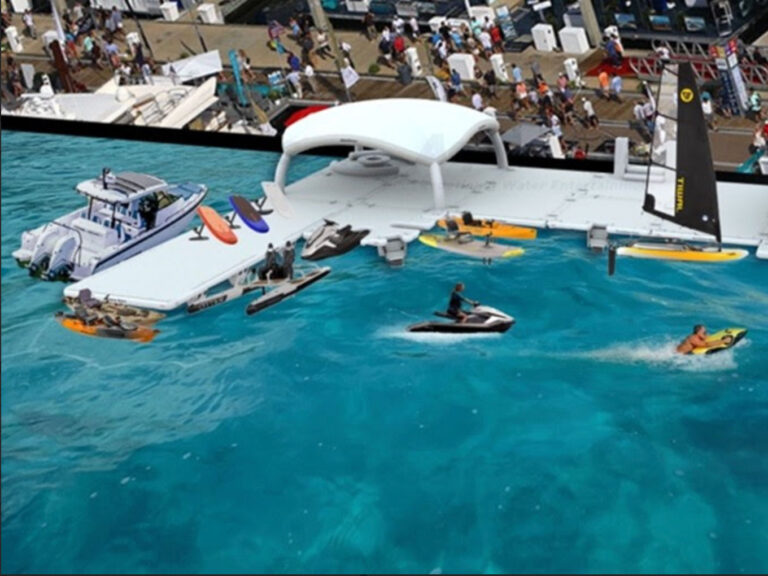
We’ve all been there. A headwind pipes up, and choppy, rough seas dance between you and your destination. You throttle up; you throttle back. You try to help your boat find its comfort zone, and you do your best to quarter the waves.
Inevitably, though, there are those stomach-dropping lurches and the slamming that clenches your muscles and rattles your dental work. Despite your best efforts, you can’t ignore the bangs down below, the ones that make the hull shudder. The ones that make you fervently hope that everyone involved with building this boat did a good job.
That’s a rough ride, even for a rough water boat. And it has happened to all of us, so let’s be honest. Not every boat can provide a soft, smooth ride in snotty conditions, no matter what the glossy brochures say.
We asked three prominent boat designers, and their answers provided much food for thought — regarding how to choose a vessel that’s going to provide a smooth ride, best boat for rough seas, the compromises and trade-offs inherent in your choice, and whether a smooth ride is even what you should be looking for in the first place.

Comparing Displacement and Planing Boat Hulls
Dave Gerr founded New York City-based Gerr Marine Inc. in 1983. He’s designed a broad range of recreational boats and commercial vessels, both monohull and multihull. When it comes to designing a soft-riding hull, he immediately pointed out that there are different sets of criteria for displacement hulls and planing hulls.
Displacement hulls, he noted, don’t pound the way a planing hull will, so they automatically provide a softer ride. To maximize this, designers need to ensure three things: a good roll time, good heave characteristics and deadrise forward.
“For the roll time, we have a formula,” Gerr said. “Every boat has a natural roll period, which is 1 to 1.1 seconds times the boat’s beam in meters. If it’s slower than that, you’ll get that drunken motion. If it’s faster, it’s going to feel snappy and uncomfortable.”
For example, a boat with a 6.7-foot beam ideally should have an approximately two-second roll time. And, Gerr added, a reasonable deadrise forward will make the vessel even more comfortable.
The formula for heave, however, is more complicated. It involves the weight of the boat and the water plane area. The lighter the boat is, and the greater its water plane area, the greater the heave motion will be.
“A wide boat with a large water plane will bounce up and down violently,” Gerr said, “but if you have a small water plane compared to the boat’s weight, that heave will be slow. If it heaves too slowly, you’ve got a wet boat.
“You want to have your roll time and heave in the target region, and then add that deadrise forward,” he continued, “so you won’t have pounding in chop.”

For a planing hull this is hard to achieve. By nature, these hulls are snappy and heave more while trolling or drifting; planing cancels that out, but you can still pound.
“What you really want is more deadrise,” Gerr said. “Just remember: The greater the deadrise, the slower the boat [for the same weight and engine]. That deep-V hull is going to need more power.”
A designer, he said, has to juggle power and what is good deadrise on a boat for optimum comfort.
“You put a deep, high deadrise at the forefoot to get the boat to lift its bow out of the water, or you’ll have steering problems,” he said. “You design it so it planes higher, and then you control it with trim tabs so you won’t trip over that forefoot.”
Deadrise is a difficult thing to visually assess at a boat show or in a dealer’s showroom, so how can a boater ascertain if a soft ride was a design priority? Gerr said the length-to-beam ratio is a dead giveaway.

“A long, slender hull is going to have a softer ride, as long as the designer got the roll time right,” he stated. “A wide, shallow hull isn’t going to perform as well. And if you’ve got a high superstructure, you’re going to have increased roll and handling problems.”
Of course, less displacement means it’s a smaller boat inside. You’re going to have to go longer to get the same live-aboard space as that shorter, wider, taller boat next door, but the good news is that your boat is going to be faster and more fuel-efficient than the fat, high version of the same length.
If you are talking deadrise, Gerr said he likes to see a minimum of 17 degrees for offshore boats, although he observed that’s still a bit shallow. Deep-V hulls are considered to be 21 degrees or more. Consider this if you’re looking for the best deadrise for rough water.
“I’d say look for a deadrise of more than 20 degrees,” he advised, “and a length-to-beam ratio on the waterline that is greater than 3.5 to 1. Those two characteristics give you a pretty good idea that the design is intended for a soft ride.”

How Does a Boat Hull Handle in Following Seas?
Michael Peters founded Sarasota, Florida-based Michael Peters Yacht Design (MPYD) in 1981. Originally specializing in high-speed boats and offshore racing, MPYD now brings its fusion of performance and aesthetic standards to a wide variety of boat designs. When asked about the search for the perfect soft-riding boat, Peters laughed.
“Think of these ideals: soft-riding, dry and fast,” he said. “Now, pick two.”
The softer-riding a boat is, the wetter it is, because it doesn’t confront the wave. Rather, it splits it. If you want to knock the water down and push it away, then you’ll feel the impact. Boaters clearly need to consider these trade-offs when seeking a soft-riding vessel, but Peters has a more important cautionary tale to share. It’s natural to think of head seas and a soft-riding hull together in the same scenario — but what happens when the boat turns around?
“That’s a different story,” Peters said. “Following seas can pick up the stern, and the sharp angle and deadrise can cause the boat to bow-steer and broach. That’s a much more dangerous situation. It’s uncomfortable to hit the seas on the nose, but it won’t kill you. Boats go out of control in following seas, not head seas.”
Simply put, a hull that is too pointy forward and too flat aft will have an increased risk of broaching. Boaters should look for a hull with deadrise spread evenly — no extremes, such as a professional offshore racing boat’s sharp deadrise throughout the hull. The best boat hull for rough seas must be able to handle following seas.
“If you’re going to have fine forward sections, you’ll balance the hull by putting a lot of deadrise aft,” Peters explained. “You’re looking for recovery, a bow that doesn’t plunge and that can regain its buoyancy in a following sea.
“In our forward sections, we always run a convex section that’s puffed out,” he continued. “Some curvature helps dissipate wave energy and impact. Concave sections look like they’ll provide a softer ride, but they actually focus the energy.”

Peters’ advice to boaters is twofold. First, avoid those extremes. They’re not necessary for most recreational boaters. And second, make sure you have a good grasp of where and how you’re going to use the boat. An offshore cruising boat might not be the best choice for a river or inland lake.
“Lakes can be much harder for running a boat than the ocean, where you have long swells rather than steep, breaking seas,” Peters said. “Just make sure you’ve planned for the worst conditions you’ll run in, not the best, and never, ever sign a contract without running the boat in the intended conditions.”
Some boats, he said, are not designed to be the best boat. Sometimes the goal is to provide the best accommodations for the hull’s length and beam, which can mean creating a vessel that has a lot of windage, high freeboard, a high center of gravity and a very wide beam for its length.
“We don’t get to design the best boat in all cases,” Peters said. “No perfect boat? No kidding. But every boat appeals to somebody. One guy might love this particular boat, and he wants that 6-foot-4-inch headroom, while another guy is going to hate the compromises.”
“You always have to be aware that the more you emphasize space, the less boat it’s going to be,” he warned. “And it’s counterintuitive, but what looks good might not be good at all.”

Peters also advised inquiring about a preferred design’s origins. Was it designed in-house at the boatbuilding facility? Was it designed by a naval architect? What are his or her credentials?
“Some people might not care, but it will help you better understand the design,” he said. “With a car, we accept that all the engineering is done correctly, and we can choose our favorite based on appeal alone. With a boat, you should think about engineering and stability calculations, not just styling.”
Finally, Peters noted that good hull designs stand the test of time. With most major advancements taking place in hybrids, like stepped hulls and multihulls, the average boat owner is going to be looking at hull designs that haven’t changed much in 20 or 30 years. And that’s OK.
“Most people just want a good family boat,” he said. “I’d say stay in the middle. The hull should look familiar. That hull from 30 years ago is still a good hull.”

A Boat’s Soft Ride is Subjective
Peter Granata, owner of Palmetto Bluff, South Carolina-based Granata Design, has been designing boats since the early 1970s. With a number of award-winning designs and patented ideas under his belt, he’s firm in his conviction that the soft-ride discussion really shouldn’t be about the boat. It’s about the people involved.
“First of all, the hull ride is felt rather than measured,” he said. “And, it’s based very much on your own individual perception of what the boat looks like and what you expect it to deliver, plus your experience up to that point. It’s very subjective.”
Soft can be a relative term. A boater who is downsizing from a 60-foot yacht to a 30-foot pocket cruiser might find the smaller boat has the worst ride he’s experienced to date, whereas a boater jumping up from a 16-footer will say that 30-footer provides the best ride he’s ever had.
The most important questions a boater can ask, Granata said, are: How well does this design meet its intended purpose, and what can it do for me?

He provided a wakeboard boat as an example. The expectation is for thrills, not the softness of the ride.
“Soft ride is certainly a measurement when it comes to boat design, but it’s not the only one,” he said. “A designer should manage the ride aspect to meet the customer’s expectation. Does the boat do what it’s intended to do?”
The idea is that ride is less important than function, based on customer priorities. If you’re headed offshore and a dry ride is your No. 1 priority, you’ll want to make sure the hull has enough flare to ensure that the water follows the hull and travels outboard rather than over the deck. If you’re an angler, you might look for hull cutaways in the right spots to support the design’s self-bailing characteristics. Bass anglers seek extra buoyancy forward to support their weight.
With “dockominiums,” deep deadrise is unnecessary because owners place a higher priority on stability at rest, accommodations and space for entertaining. And with water-sports boats, the wake is all-important. Without that, the hull is worthless.
“We get so wrapped up in the specifics of hull generation that we forget someone has to buy it and spend time in it,” Granata said. “A designer has to know how the boat will be used, and you do as well. The boat is for you, not for the guy who made it.”


